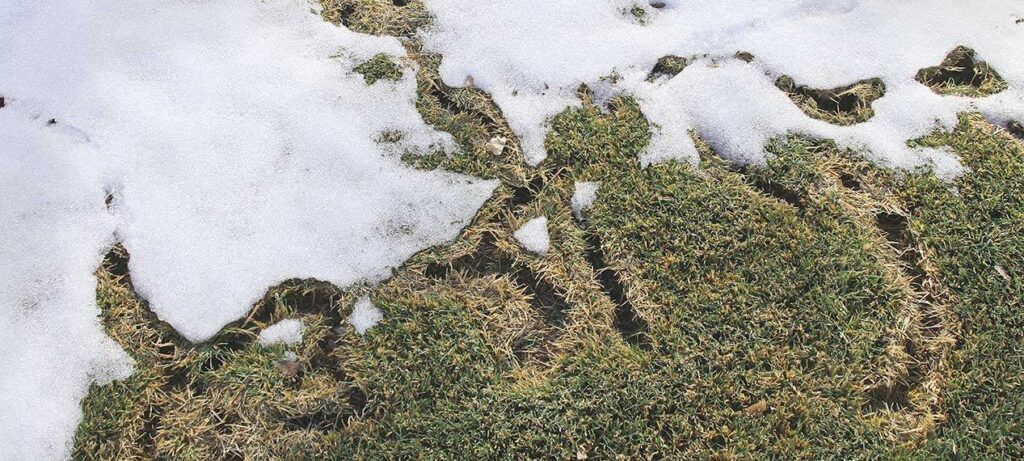Vole Damage to a Lawn
Fixing Vole Damage to a Lawn
Voles Create Highways Underneath the Snow
These creatures are active throughout the year and do not hibernate. They typically inhabit areas that are less than one-quarter of an acre and can thrive in various environments. Unfortunately, vole damage to a lawn can be particularly damaging during the winter months. They create numerous surface runways and underground tunnels, resulting in multiple burrow entrances. A single burrow can house several adult voles, and large populations may reach up to 500 voles per acre.
What are Voles?
Voles are small rodents measuring between 4 to 8 inches in length, with colors ranging from brown to gray. Their primary diet consists of grasses, forbs, vegetables, and garden plants, but they also consume the bark of trees and shrubs, especially during the fall and winter months. Although voles prefer young, tender trees and plants, they are quite adaptable in their diet.
Damage is Noticed After the Snow Melts
Around February and March, you might notice unusual ruts or paths in your lawn. These paths can be quite extensive, especially if your lawn has been covered by snow for a prolonged period. These irregular trails are made by voles. Without preventative measures, voles can inflict substantial damage to your lawn.
Vole
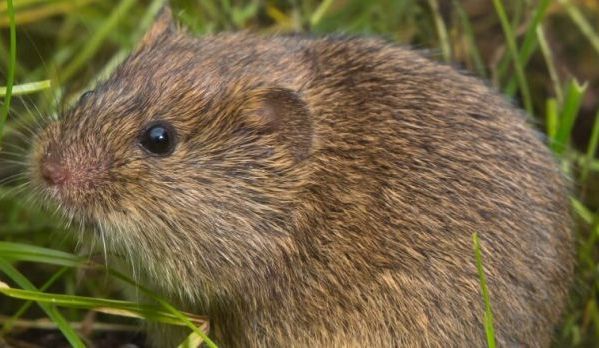
Vole Damage to a Lawn
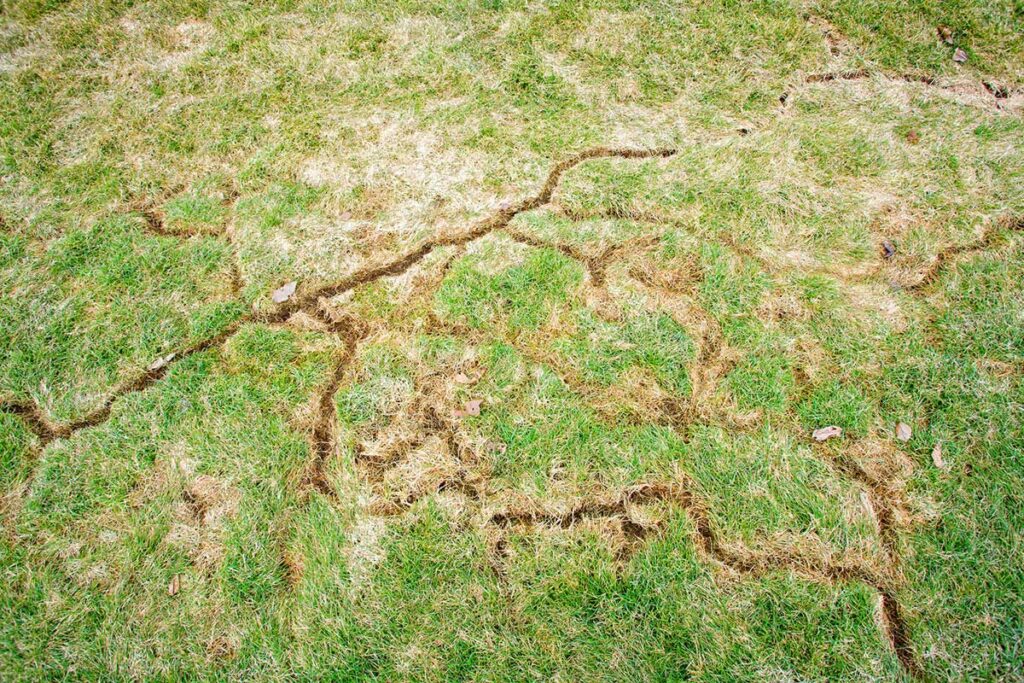
How to Repair Vole Damage in a Lawn
Vole Highways
Vole damage to lawns is typically first noticed in early spring, after the snow has melted. The actual damage usually occurs during the winter months but often goes unnoticed until a few months later. In affected lawns, you may see irregularly shaped grooves or ruts in the turf. These paths tend to be more pronounced near the edges of the lawn and are generally more severe following winter months with prolonged snow cover. Vole damage can also be more significant if there are nearby fields of grass or prairie grass.
Core Aeration Works Best
To repair vole damage, it is important to perform thorough core aeration. Fertilizing the lawn with a high-quality organic product, such as Synergy, can stimulate the growth of rhizome roots. Later in the year, when irrigation is in place, it’s crucial to follow the 1-2-3-2-1 watering technique. This method encourages deep root growth in grasses, helping to recover from damage. Most vole damage can be repaired quickly with proper fertilization and core aeration.
Fall Preparation
Mowing the lawn short in the fall can help reduce damage from voles. If there are native grass areas nearby, it’s advisable to mow the tall prairie grasses that are adjacent to turf grasses. This practice reduces habitat for voles, which may, in turn, lessen damage to the nearby turf. If severe vole damage occurs repeatedly, it may be necessary to call in an exterminator or set traps to prevent recurring damage over the winter months.
Damage Other Plants Too
In addition to lawns, voles can also damage trees and shrubs. Signs of vole damage to trees include girdling and irregular patches of gnaw marks. Gnawed stems may have pointed tips near the ends of the branches.
Core Aeration
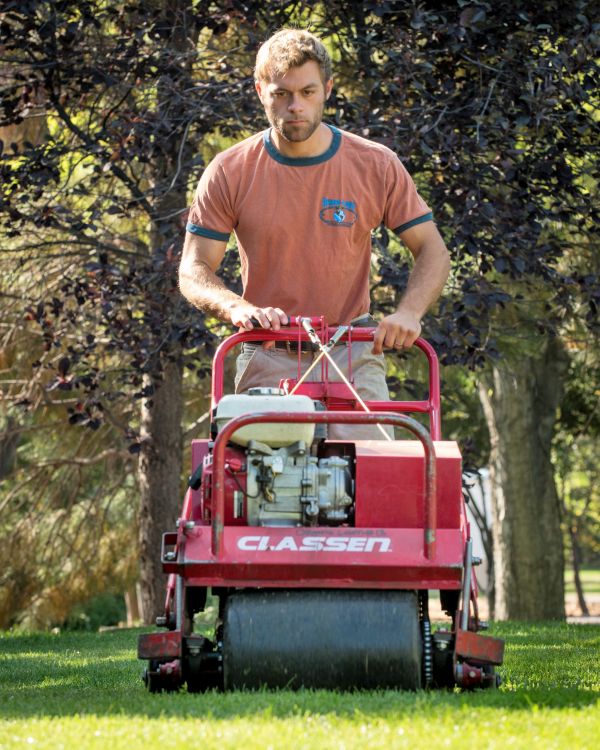
A Closer Look at Vole Damage to a Lawn
Boulder and Fort Collins Area – Lawn Care Experts
Are you dealing with vole damage to your lawn. Our lawn care experts can help!
Vole Damage to a Lawn FAQs
How do Voles Cause Damage to Grass?
Damage is Noticed After the Snow Melts
Vole damage to lawns is most commonly noticed in early spring, after the snow melts. Although the actual destruction occurs during the winter months, it often goes unnoticed until spring arrives. Affected lawns display irregularly shaped grooves or ruts in the turf, particularly pronounced near the edges. This damage can be especially severe following winters with prolonged snow cover, and it tends to be more significant when fields of grass or prairie grass are nearby.
Repair with Core Aeration
To effectively restore your lawn after vole damage, start with thorough core aeration. This step is essential for repairing your turf. Follow it up by fertilizing with a high-quality organic product like Synergy, which significantly stimulates the growth of rhizome roots. Once you have established irrigation later in the year, employing the 1-2-3-2-1 watering technique is vital. This method encourages deep root growth, allowing your grasses to recover robustly from damage.
Fertilization Helps
With the right fertilization and aeration, you can repair most vole damage quickly and effectively. Additionally, mowing your lawn short in the fall is a proactive strategy to minimize potential vole damage. If there are native grass areas nearby, be sure to mow the taller prairie grasses adjacent to your turf. This will help reduce vole habitat and greatly decrease the chances of damage to your lawn.
Exterminator
If you experience severe or recurring vole issues, consider calling in an exterminator or setting traps to prevent further damage over the winter months. Voles threaten not only lawns but also trees and shrubs. Signs of vole damage to trees include girdling and irregular patches of gnaw marks, with stems often showing pointed tips at the ends of branches. By taking these effective measures, you can successfully protect and preserve your landscape from vole damage.
Severe Vole Damage
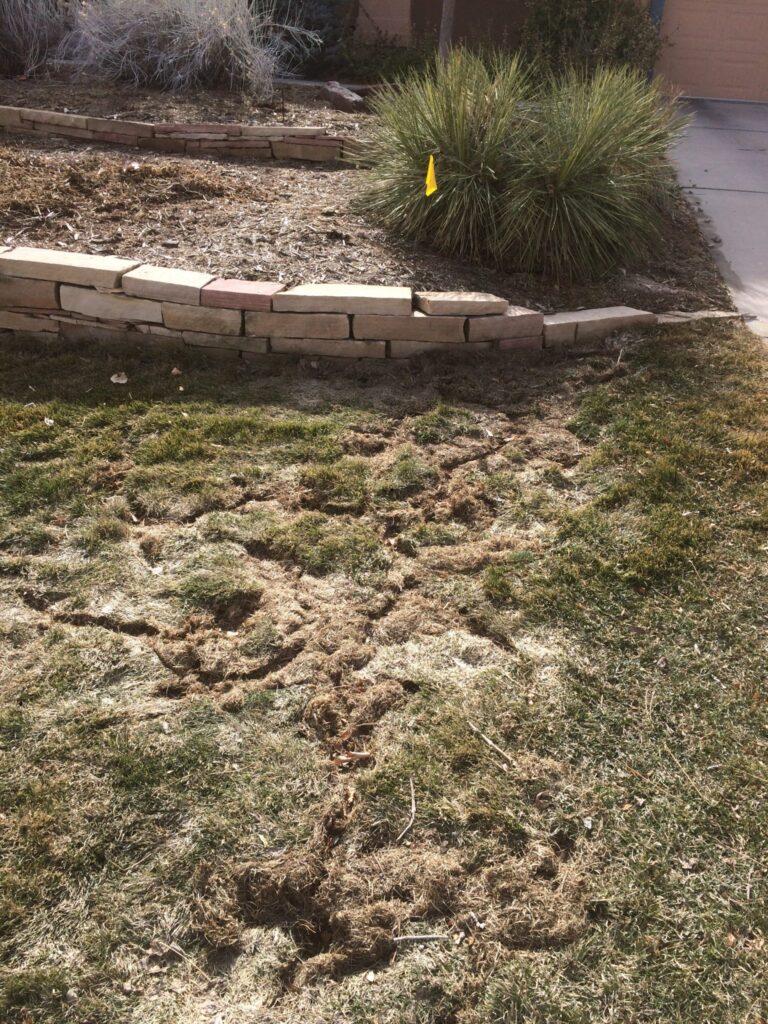
Additional FAQs - Vole Damage to a Lawn
Vole damage refers to the destruction caused by voles (small, mouse-like rodents) in lawns. Voles create shallow surface tunnels and runways in the grass as they feed on vegetation during the winter months, often beneath snow cover. These tunnels result in dead grass and an unsightly network of damage that becomes visible when the snow melts.
Vole damage refers to the destruction caused by voles (small, mouse-like rodents) in lawns. Voles create shallow surface tunnels and runways in the grass as they feed on vegetation during the winter months, often beneath snow cover. These tunnels result in dead grass and an unsightly network of damage that becomes visible when the snow melts.
Vole damage refers to the destruction caused by voles (small, mouse-like rodents) in lawns. Voles create shallow surface tunnels and runways in the grass as they feed on vegetation during the winter months, often beneath snow cover. These tunnels result in dead grass and an unsightly network of damage that becomes visible when the snow melts.
Vole damage refers to the destruction caused by voles (small, mouse-like rodents) in lawns. Voles create shallow surface tunnels and runways in the grass as they feed on vegetation during the winter months, often beneath snow cover. These tunnels result in dead grass and an unsightly network of damage that becomes visible when the snow melts.
Vole damage refers to the destruction caused by voles (small, mouse-like rodents) in lawns. Voles create shallow surface tunnels and runways in the grass as they feed on vegetation during the winter months, often beneath snow cover. These tunnels result in dead grass and an unsightly network of damage that becomes visible when the snow melts.
Signs of vole damage include:
- Surface Tunnels: Shallow, serpentine runways in the lawn with dead or matted grass.
- Chewed Grass and Roots: Evidence of gnawing on grass stems and roots.
- Burrow Openings: Small, round holes (about 1–2 inches in diameter) near runways, indicating vole burrows.
- Damage is most noticeable after snow melts in early spring.
In most cases, vole damage is superficial and affects only the grass blades and top layer of the lawn. The root systems are usually intact, allowing the grass to recover with proper care. Severe infestations may require seeding to repair damaged areas.
To repair vole damage:
- Rake the Lawn:
- Gently rake the affected areas to remove dead grass and expose the soil.
- Aerate and Overseed:
- Aerate the lawn thoroughly and if necessary seed bare spots with a grass seed mix suited to your lawn type.
- Fertilize and Water:
- Apply a high-quality organic fertilizer to encourage healthy regrowth, and water properly by following the 1-2-3-2-1 lawn watering technique.
Preventing vole damage to a lawn may be a difficult task to accomplish but here are some techniques that may help reduce the damage.
- Removal of the Voles:
- Getting rid of the voles is the only way to completely protect a lawn from vole damage.
- Removing Debris:
- Clear leaves, grass clippings, and other debris in the fall to eliminate potential vole shelter and food.
- Mowing Properly:
- Cut the grass shorter before winter (2.25 – 2.5 inches) to reduce cover for voles.
- Snow Management:
- Avoid piling snow on the lawn, as deep snow provides protection for voles.
- Barriers:
- Place mesh barriers or fencing around high-value areas, such as flower beds or young trees, to deter voles.
Yes, voles have natural predators like hawks, owls, foxes, snakes, and cats. Encouraging the presence of these predators in your yard can help control vole populations.
Vole repellents can be effective but may require repeated applications. Products containing castor oil or other natural ingredients can deter voles. However, they are most effective when used as part of an integrated management approach.
Action should be taken in the fall and winter to prevent damage, such as removing debris and mowing properly. If damage is already visible in the spring, immediate repair measures like raking and seeding can help restore the lawn.
Yes, trapping can be an effective way to reduce vole populations in small areas. Use mouse traps baited with peanut butter near active runways and burrow openings. For larger infestations, professional pest control may be needed. Note: Organo-Lawn does not offer vole management services, but we do offer vole damage repair services like core aeration, lawn fertilization, and lawn seeding.
